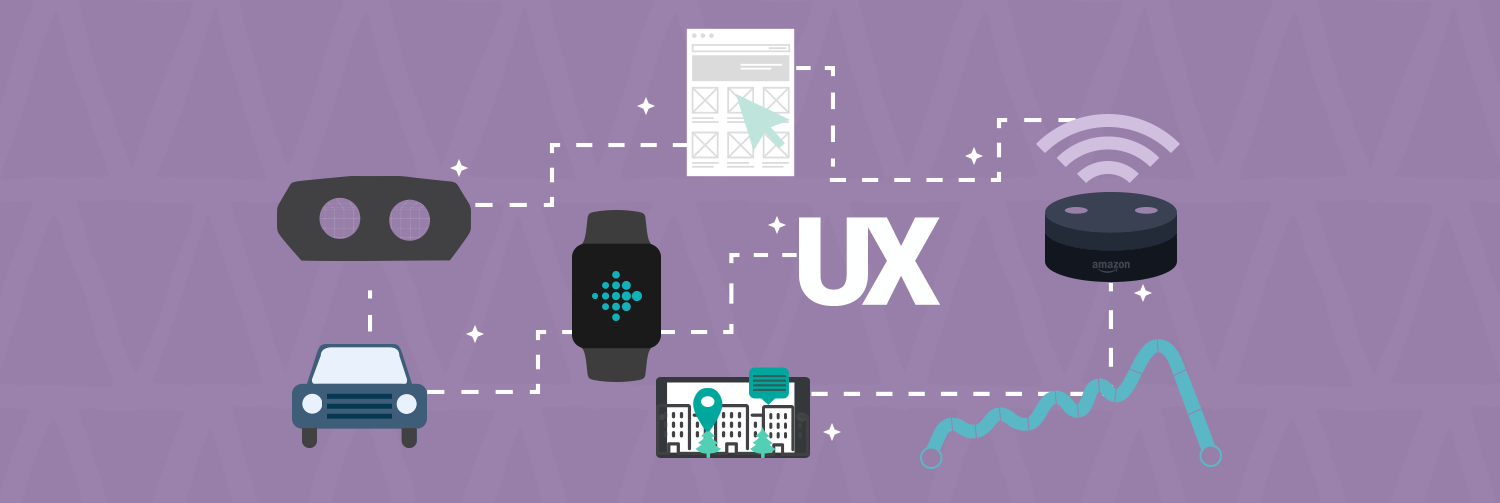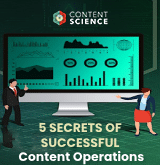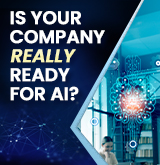
Another year in the books, and it’s time once again to look at where the user experience field is going over the next 12 months. This year was a very interesting year for the field, with many of the things I predicted last year coming to pass, including an increased emphasis on accessibility and inclusive design.
So, what can we expect in 2018? Here are my thoughts…
Better and cheaper next-gen augmented and virtual reality devices
With the release of several affordable headsets from multiple companies, there was lots of movement in in the AR and VR realms this year. The latest version from Windows 10 adds “out of the box” applications and utilities that support many of these devices. Next year, I see many interesting applications and experiences coming from that new device family.
Yet, the most interesting device sold in 2017 was Lenovo’s Jedi Challenges system. Powered by your smartphone, this untethered device allows users to engage with some of their favorite “Star Wars” characters and experiences–it even comes with a lightsaber so you can fight Darth Maul and Darth Vader!
While the device’s resolution does not match the more expensive headsets such as the Oculus Rift, the quality is good enough for you to feel immersed in that galaxy far, far away. As it is only $200, it is also one of the cheaper devices out there.
Expect the success of this product to result in more like it. I fully expect the next version of these devices to be even cheaper with better resolution. Designers, time to brush up on your 3D modeling skills…
A glut of ubiquitous personal assistants leads to consolidation and partnerships
Looking for a virtual assistant? You have Alexa, Cortana, Google Assistant, and Siri all competing for your attention. All of them want to help you– well, the companies producing them want to help you. That’s not to mention the “one-off” digital assistance in cars or specialty smartphones.
It’s all too much, and I fully expect that in 2018 the dust will settle and one or two market leaders will rise to the top and become the de facto assistant. As part of that, I expect partnerships and/or active takeovers to occur (like, say, Siri being replaced or “powered by” Google Now.)
In 2018, I predict that personal digital assistants will become smarter and more ever-present in user’s lives. Many people have–and will–push back on this, but this trend is not going away anytime soon. Also expect more personalized digital assistants to be rolled out in various industries, which will also increase the usage and exposure of these helpers.
Too many IoT devices (with some major security holes)
The Internet of Things is exploding. Many are projecting that there will 50 billion IoT-connected devices in place by 2020, though critics place that number much lower. No matter the final tally, connected devices are not going away, and many homes are now being built with these connected devices in mind.
The challenge these devices bring is two-fold: interfaces and security. How do users interact and control these devices? And how secure are they? There have been many notable examples of connected devices being completely unlocked and accessible by hackers.
And this isn’t just about data security. Imagine if connected “smart cars” can be hacked? I would not want to be driving at 80 mph and then have my vehicle be “taken over” by a black hat hacker.
UX and product management roles will continue to blend
As I expected, demand for user experience practitioners rose in 2017 as more and more organizations realized the value that experience design brings to their products and services.
As UX becomes more part of the product management process, the role of “UX Architect” and “Product Manager” will become murkier by the day, with some companies eventually merging the two. This could pose an entirely new set of challenges. For example, some UX professionals will be ill-equipped to complete product management duties, while product managers may not have the experience to properly conduct user experience research and design.
If you are a UX practitioner, I recommend getting some training or reading up on product management. The more you understand about the domain, the better prepared you will be if you eventually inherit some of these responsibilities.
Increased emphasis on experience design rather than interfaces
Consider the aforementioned IoT and personal assistant trends. It’s clear that what I consider “pure” experience design–where the design team has to look at things holistically–can often result in a different type of deliverable than the wireframes or specifications that was the typical design artifact in the past.
The new deliverable focus tends to be journey maps and service design blueprints, which details all the interactions and technology touchpoints users have in their workflow. A focus on mental models and research will allow for the user to be the center of the design activities – and not the screens they engage with.
Since a holistic view of the complete experience design is becoming more and more a focus, the content and information users engage with whatever the channel is a key area of focus. Content strategy and design is a vital part of a complete user experience design process, and (of course) Content Science Review is a leading edge resource for that aspect of design.
More (and more subtle) enablers and “micro-interactions”
The devil is in the details–take, for example, this tweet about the iPhone:
Really, @Apple? That’s what your super-intelligent spell check offers as a correction for “imstead”? Why TF is “instead” not one of the options? You used to know what User Experience meant; you helped define it! Now you ignore it. pic.twitter.com/47mkKzXb2T
— Joe Ortenzi (@wheelyweb) December 6, 2017
In this case, Apple was called out for something that should be contextually obvious to the spell-checker, but instead, the tool makes the wrong expectations. Spell-check is one of the thousands of enablers and “micro-interactions” that exists in every operating system and application.
These enablers support users in ways that are often invisible to users, but if they fail–or worse, if they get in the way–then users get frustrated. It’s like when a magician visibly messes up part of a trick. The audience sees it, and the illusion is broken.
As applications and operating systems mature, expect to see more focus on these enablers and how important they are to the complete user experience.
Omnichannel experiences will become expected–and the new baseline
Finally, a definite trend that began a couple of years ago will continue apace: the “omnichannel” experience. Instead of the idea of the device as the center of the experience, the person will now take center stage. This means that they can start and resume work wherever they are, with whatever device they have handy.
For some, it’s browsing on a phone and then sending the article to their desktop. For others, it’s logging their exercise on a wearable device and reviewing their personal fitness dashboard on their laptop. Whatever the case, people will expect a consistent experience across their technology stack, and any disruption to that expectation will result in user frustration and pushback.
In short, the more seamless companies can make this experience, the more advantages they will have to consumers.
These are some of the trends to look out for in user-centered design in 2018. As ubiquitous technology continues to become integrated into our lives, let’s hope that more companies focus on users so that this technology adds more and more value to everyone.
Events, Resources, + More
5 Secrets of Content Ops Success: Webinar
Learn how the most successful organizations scale and mature content operations. Based on our research with 700+ content leaders and professionals.
The Ultimate Guide to End-to-End Content
Discover why + how an end-to-end approach is critical in the age of AI with this comprehensive white paper.
The Content Advantage Book
Learn more about the much-anticipated third edition of the highly rated book by Colleen Jones. Preorder the electronic version.
20 Signs of a Content Problem in a High-Stakes Initiative
Use this white paper to diagnose the problem so you can achieve the right solution faster.
Workshop: Are You Ready for AI?
Is your organization really ready for AI at scale? Let the Content Science team guide your leaders through assessing 4 areas of readiness.
Upskill with Content Science Academy
Training for modern content roles through on-demand certifications + courses or live workshops.







Comments
We invite you to share your perspective in a constructive way. To comment, please sign in or register. Our moderating team will review all comments and may edit them for clarity. Our team also may delete comments that are off-topic or disrespectful. All postings become the property of
Content Science Review.